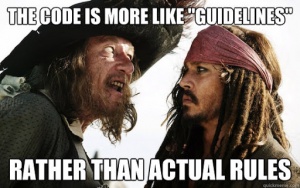
Photo by Steven Ungermann on Unsplash
Normally, this post would be titled “Heating the White Box” or something like that, but it’s April and I’m in the middle of the A-to-Z blog – and do you know how hard it is to find a “Y” word? So Y is for Yoke, as in – yoking the scene to reality. Today will be a writing exercise related to description.
I know most of us have heard the story about the English Teacher asking student why the thought the author made the curtains Blue. Description can enhance theme, but sometimes the curtains are Blue because they are Blue.
As a writer, when writing flash and short stories, work to have all description pull extra weight, where Blue has a reason for being part of the story beyond making sure the room is not just a white box. (Although that is a legitimate reason to make the curtains Blue.)
Oh, some of today’s readers might not be familiar with the White Box concept. Newer writers often have one skill set they are good at and need to develop others – they might be good at plot, or description, or characters, or dialogue – and when they write a scene, the other aspects are underutilized. For example, a dialogue writer could have two characters talking to each other, but they don’t interact with the room – does it have furniture, are they indoors or outdoors, why are they in this room and not elsewhere? They are in a “white box”, an empty stage.
To break the white box, the characters need to interact with the room. Today, though, the writing exercise is have it be heavier than just description. Yoke the description to the story in some way. Bonus points for giving a Show instead of Tell of a secondary aspect to the story. The characters walk across the wooden floor and the taps on their shoes ring (letting us know they are tap dancers). The characters do dishes which can carry all kinds of relationship and emotional signals. The characters sit down in heavy carved chairs, one higher than the other, indicating status in the fantasy world without expressly stating one is more powerful than the other.
WRITING EXERCISE: Write a dialogue flash with one bit of scene description that pulls extra weight. A little more complicated than normal, aim for 100 to 200 words.
My Attempt: In Argumentative Law – M is for Monday (see links below), I had the heat kick on. I did this to indicate that the class was held in the late fall to early winter in the Northern hemisphere, as would be common for the first semester of a college course. While all the other aspects of the room, from the chairs to where the teacher stood in relation to the class, are fairly generic, I added this to set the class in time and place without expressly stating it.
Argumentative Law series
- L is for Legality (4/14/2024)
- M is for Monday (4/15/2024)
- O is for Options (4/17/2024)
- Editing Rant: Q is for Quorum (4/19/2024)
- Writing Exercise: Y is for Yoke (4/28/2024)



